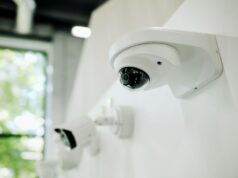Fire safety protocols are critical in healthcare buildings, where the stakes are high due to the presence of vulnerable patients and complex equipment. Effective fire safety management not only ensures compliance with regulations but also safeguards lives and maintains the continuity of care. Here’s an in-depth look at the essential fire safety protocols healthcare facilities management must implement.
Compliance with Fire Safety Regulations
Ensuring fire safety in healthcare buildings begins with strict adherence to updated fire safety regulations. The Centers for Medicare & Medicaid Services (CMS) mandates several key requirements:
- Automatic Sprinkler Systems: Required in buildings taller than 75 feet.
- Fire Watch or Evacuation: Mandatory if sprinkler systems are offline for more than ten hours.
- Health Care Facilities Code: Provides detailed safety measures for various healthcare settings.
Building Compartmentalization and Maintenance
Maintaining the integrity of fire-resistant constructions is vital. Key elements include:
- Fire-Resistant Assemblies: Exterior walls, fire barriers, and smoke partitions.
- Regular Inspections: Regular checks and repairs to maintain barrier integrity.
- Detailed Records: Keeping records of inspections and repairs to demonstrate compliance.
Routine Safety Checks and Staff Training
Routine safety checks are essential in preventing fires from common hazards. Important steps include:
- Electrical Inspections: Regular checks of outlets and wiring to prevent malfunctions.
- Kitchen Safety: Regular cleaning and maintenance of kitchen equipment to avoid grease fires.
- Staff Training: Training staff in fire safety protocols and the use of fire extinguishers.
Emergency Preparedness and Evacuation Plans
Developing and regularly rehearsing emergency evacuation plans ensures the safety of patients and staff. Key components include:
- Mobility Considerations: Plans must account for patients with limited mobility.
- Clear Signage: Ensuring evacuation routes are clearly marked and unobstructed.
- Regular Drills: Conducting fire drills to ensure swift and orderly evacuations.
Utilization of Fire-Resistant Materials
Incorporating fire-resistant materials in construction and maintenance significantly enhances fire safety. Important practices include:
- Visual Inspections: Regular checks of fire-resistant systems to ensure effectiveness.
- Detailed Inventory: Keeping an updated list of fire-resistant systems and materials.
- Adherence to Guidelines: Following installation instructions and maintenance guidelines for fire-resistant products.
Comprehensive Fire Safety Management
The Health Technical Memorandum 05-01 by NHS England provides detailed guidance for managing fire safety in healthcare buildings. This includes:
- Robust Management Systems: Tailoring fire safety management to the unique needs of healthcare facilities.
- Integrating Precautions: Incorporating fire precautions and protective measures into the operational framework.
Implementing stringent fire safety protocols in healthcare buildings is essential for protecting lives and maintaining the continuity of critical healthcare services. By adhering to updated fire safety regulations, maintaining fire-resistant constructions, conducting routine safety checks, and preparing comprehensive emergency plans, healthcare facilities can significantly enhance their fire safety. Continuous staff training and the use of fire-resistant materials further support these efforts, ensuring a safe and compliant environment for patients, staff, and visitors alike.
By following these fire safety protocols, healthcare facilities can effectively mitigate fire risks and ensure a safe and secure environment for everyone.






